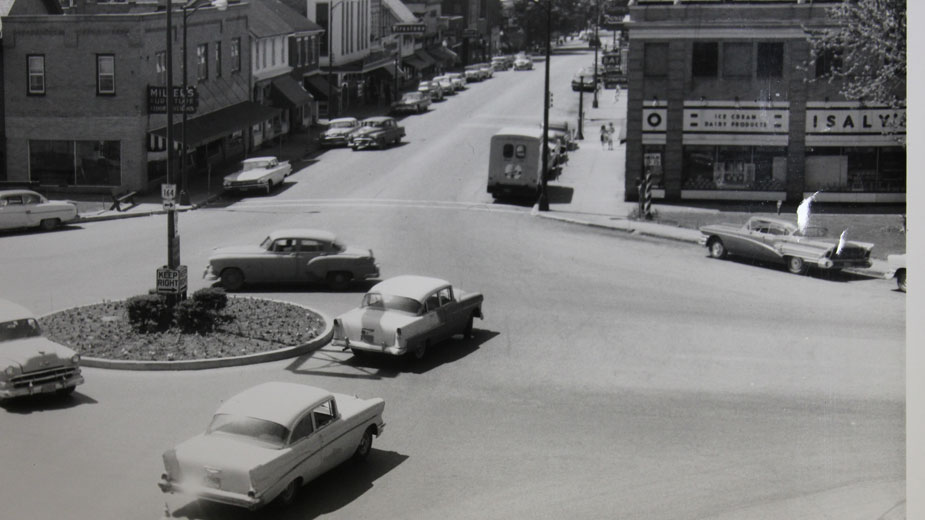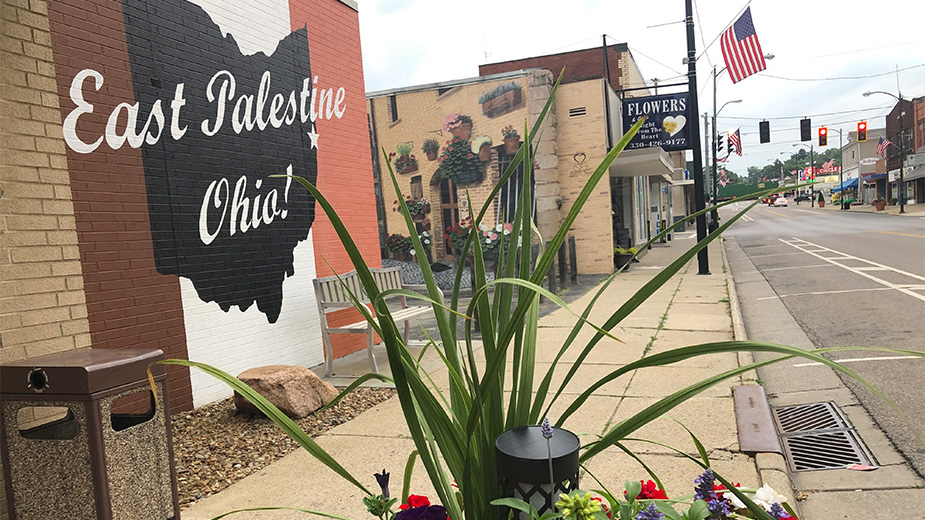Columbiana’s History Revolves Around Square
COLUMBIANA, Ohio – If one thing has been a constant throughout the history of Columbiana, it’s the town square where Main Street and Park Avenue intersect.
In 1805, three years after he and his family arrived in the area, town founder Joshua Dixon platted the first parcels of what would become Columbiana with surveyor William Heald. The two streets in town were established as Main Street and Main Cross Street, now Park Avenue, with 58 lots available for purchase for between $25 and $30.
Of the buildings put up on the original lots, only two remain: one on the northwestern corner of the square next to Main Street Theater, the other on the northeastern corner next door to the history society’s log house.
The town flourished over the next few decades, expanding out from the square and in 1837, Columbiana incorporated only to reverse that action five years later. In 1856, the Pittsburgh, Fort Wayne and Chicago Railroad – the forerunner of the Pennsylvania Railroad – added a line that ran across the south side of town.
“That’s what really put Columbiana on the map,” says Beverly Richardson from the Historical Society of Columbiana and Fairfield Township. “Everything used to come through New Lisbon [today Lisbon] but the railroad wanted the flattest land they could to build on.”
A year later, Columbiana reincorporated as a village, a designation it would hold until 2000 when its population reached the 5,000-resident threshold for a city.
Around 1840, the village became one of the first in the nation with mail delivered directly to homes.
The postmaster at the time, John Hiner, was described as “a cranky old man,” according to the history society. Because he disliked people coming to his home to pick up their mail, he walked door-to-door, dropping off every letter that came through the Columbiana Post Office.
The Columbiana Street Fair, today one of the hallmarks of the calendar of annual events, was first held on Main Street in September 1885. Among the contests and prizes were 20 yards of silk for the best five pounds of butter and 25 yards of wool carpet for the best one-half bushel of corn.
From then through the Great Depression, most developments downtown Columbiana were focused on infrastructure. Village Council explored the addition of a sewer system in 1913 and the first sidewalks were put in at the cost of five cents per foot assessed property owners. By 1920, the project was completed, covering downtown in walkways. Six years later, after an attempt failed to limit the number of cars in town, the first traffic light was installed on the square. Speed limits were introduced the following year and later the square was converted to a circle, as it remains today.
By the 1930s, downtown Columbiana was home to a hotel, a millinery, doctors’ offices and “services to fulfill every need. …
“If you couldn’t find an item somewhere on Park or Main or the connecting alleys,” the history society’s own history book reads, “you probably didn’t need it – or it didn’t exist.”
Following rationing during World War II, which affected everything in downtown from the availability of sugar to Firestone’s rubber tires, there was growth throughout Columbiana, especially in residential areas. According to the history book, at one point, 22 houses were being built at the same time.
That growth also translated to businesses as a new theater was built, along with a golf course and new restaurants.
In 1957, ground was broken on the Columbiana Shopping Plaza, spurring the creation of the village planning commission that continues today. Among the first stores in the plaza was a Ben Franklin, owned by Barbara Maurer, granddaughter of the founder of Tidd’s Department Store, a mainstay in downtown for 113 years.
Over the years, business slowly edged northward to the intersection of state routes 14, 46 and 164 and the downtown had to adapt. In the late 1970s and early ’80s, antiques shops moved in, which remained the bread-and-butter until a recent revival.
“Downtown really is the center of everything here,” Richardson says. “Our motto is ‘The City with a Small-Town Heart,’ and I think downtown has a part for that.”
Pictured: Columbiana’s town square in the 1950s.
Copyright 2024 The Business Journal, Youngstown, Ohio.



